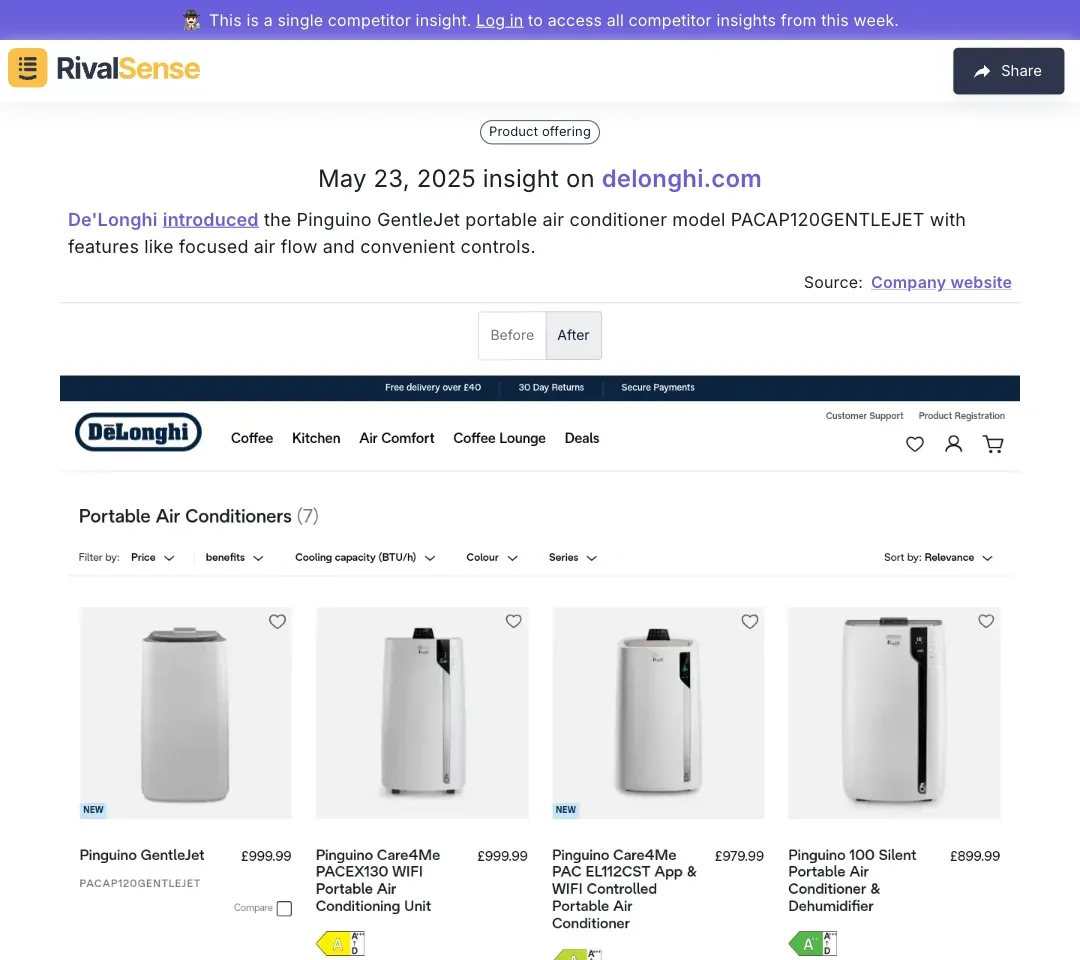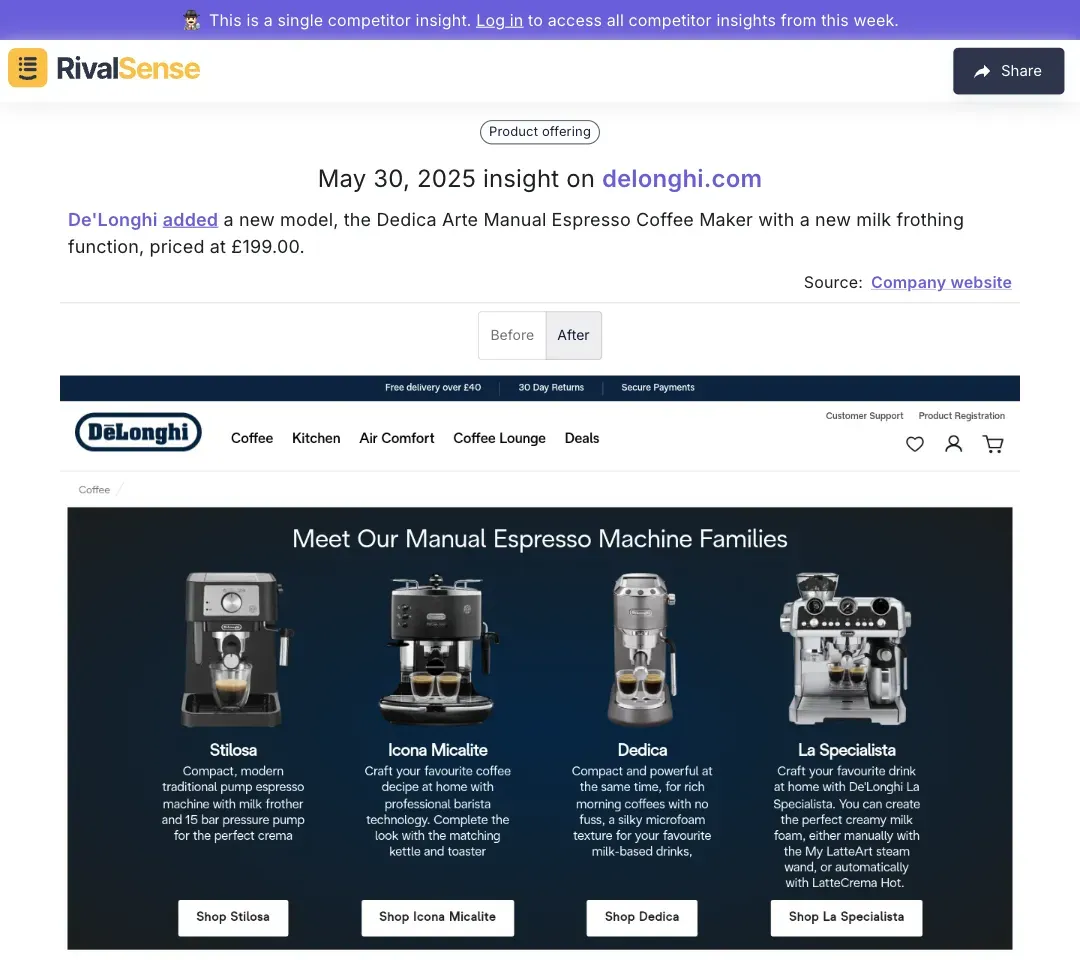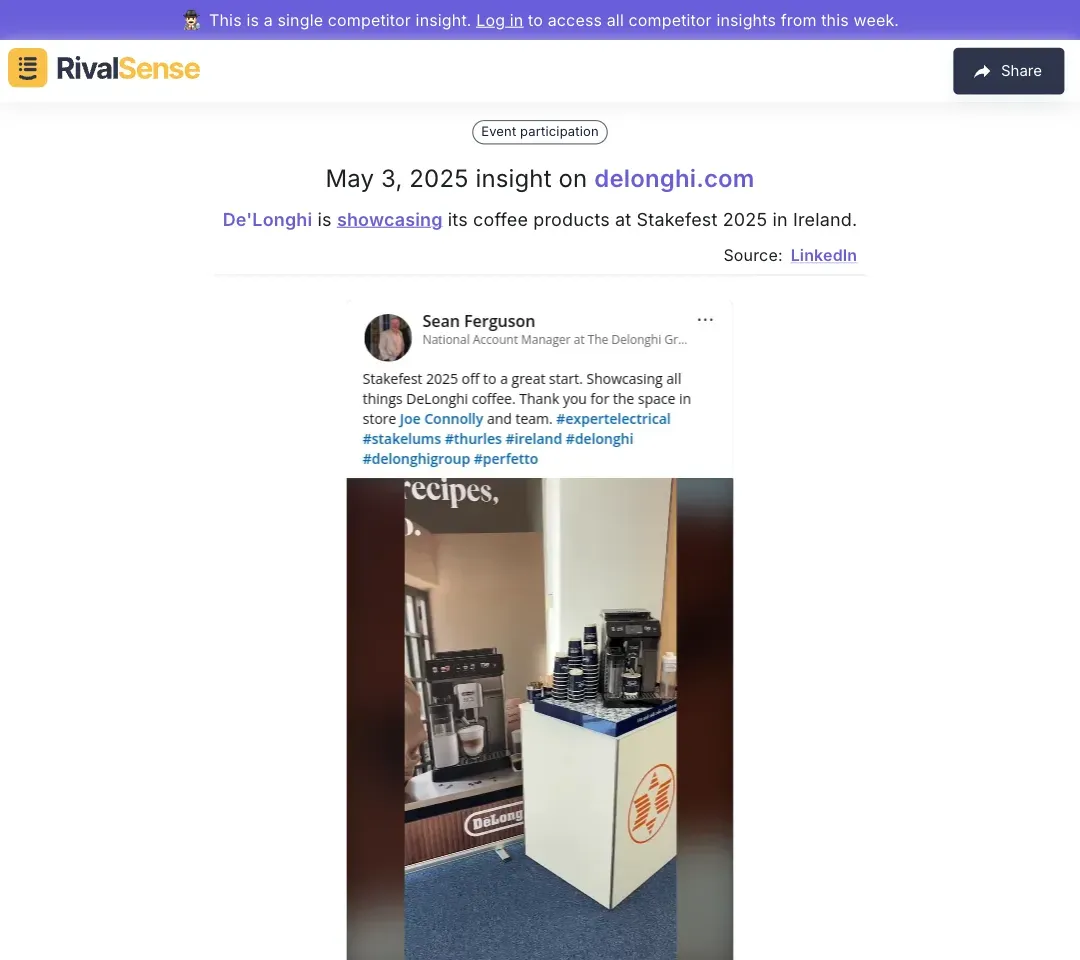Trend Analysis: Elevating Home Appliance Competitor Insights
In the fast-evolving home appliance industry, staying ahead means keeping a close eye on your competitors. Tracking their product launches and innovations isn't just about knowing what they're up to—it's about uncovering opportunities to differentiate and innovate. Competitor insights can directly influence your product development and marketing strategies, ensuring you meet market demands more effectively than your rivals.
Key activities to monitor:
- 🔍 New Models and Features: Identify gaps in your offerings by analyzing competitors' latest products
- 💰 Pricing Strategies: Understand market trends to position your products competitively
- 🎪 Event Participation: Gain insights into industry trends through trade show observations
Practical Steps to Get Started:
- Set up automated alerts for competitor announcements
- Analyze customer reviews of rival products weekly
- Conduct quarterly pricing audits
- Attend at least 2 industry events annually
Analyzing Product Innovations and Feature Enhancements
Product innovations drive differentiation in the crowded home appliance market. Tracking feature upgrades reveals consumer preferences and technological shifts that inform your R&D pipeline. For example, portable appliances with improved user interfaces often indicate market demand for convenience.
Take De'Longhi's recent launch of the Pinguino GentleJet portable air conditioner with focused air flow and simplified controls:

Why this matters: Monitoring feature enhancements helps you spot emerging consumer needs before they become industry standards. This insight allows you to prioritize development resources effectively.
Actionable framework for innovation:
| Step | Action | Outcome |
|---|---|---|
| 1 | Benchmark competitor features quarterly | Identify capability gaps |
| 2 | Test new concepts with focus groups | Validate market demand |
| 3 | Align R&D with top-performing rival features | Accelerate development cycles |
The Impact of Pricing Strategies on Market Positioning
Pricing directly shapes consumer perception and competitive positioning in home appliances. A strategic price point can position products as premium yet accessible or value-focused alternatives. Regular monitoring prevents pricing missteps that erode margins.
Consider De'Longhi's Dedica Arte Espresso Coffee Maker launch at £199.00:

Why this matters: Real-time pricing intelligence helps you balance features with consumer willingness to pay. Spotting these moves early allows swift counter-strategies before market positions solidify.
Pricing optimization checklist:
- ✅ Conduct monthly competitor price comparisons
- ✅ Analyze feature-to-price ratios across product tiers
- ✅ Test price elasticity during promotional periods
- ✅ Align discounts with competitor sale cycles
Leveraging Trade Shows and Events for Brand Visibility
Industry events offer unparalleled competitive intelligence and networking opportunities. Observing booth traffic, product demos, and attendee engagement reveals competitors' strategic priorities. Early awareness of participation allows strategic counter-planning.
For instance, tracking De'Longhi's presence at Stakefest 2025:

Why this matters: Event intelligence helps allocate marketing resources effectively. Knowing where competitors appear allows you to dominate adjacent events or negotiate better booth positioning.
Event strategy blueprint:
- Pre-event: Monitor competitor announcements 90 days out
- During event: Track social media engagement metrics
- Post-event: Analyze lead generation results vs. competitors
Strategic Takeaways for Home Appliance Businesses
Consistent competitor monitoring transforms market intelligence into actionable strategy. The most successful brands institutionalize competitor analysis across departments from product development to marketing. Here's how to operationalize insights:
Competitor response framework:
- 🚀 For product launches: Conduct gap analysis within 72 hours
- ⚖️ For pricing changes: Run margin impact simulations
- 🤝 For partnerships: Evaluate counter-collaboration opportunities
Monthly monitoring ritual:
- Review all competitor moves from previous month
- Map findings against your strategic roadmap
- Assign ownership for response actions
- Update competitive positioning documents
Conclusion: Staying Ahead in the Competitive Home Appliance Market
Competitor intelligence provides the strategic foresight needed to lead in dynamic markets. By systematically tracking product innovations, pricing shifts, and event strategies, you transform observations into proactive business decisions. The key is establishing continuous monitoring processes rather than reactive analysis.
Ready to transform competitor insights into action?
Try RivalSense for free and get your first automated competitor report today. Track product launches, pricing changes, and event strategies - all delivered in a concise weekly briefing.
📚 Read more
👉 Decoding Competitor Pricing: A Strategic Workflow for Business Leaders
👉 Marketing vs. Business Strategy: How to Track Competitors Effectively
👉 Mastering Competitor Customer Success Analysis: A Step-by-Step Guide
👉 Advanced Tactics to Monitor SaaS & AI Competitive Threats
👉 How Jumio's Legal Move Reshaped Competitive Strategy in Digital Identity
